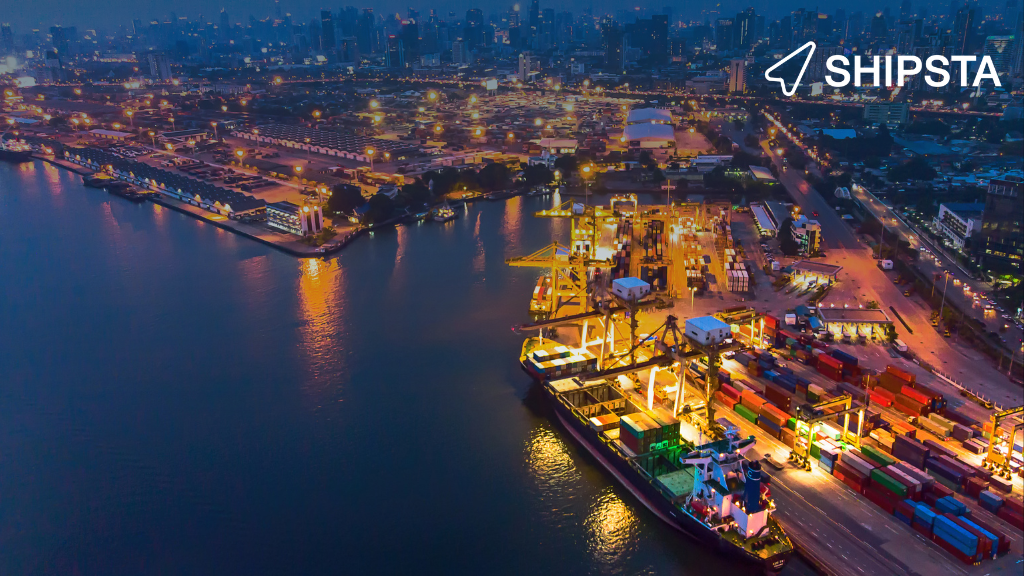It's easy to feel overwhelmed by the complexities of shipping goods because, well, it’s complicated. The globalisation of trade means you need to manage countless lanes, ports, destinations and regulations - which is no easy feat.
The intricate nature of moving goods in today’s world throws up some big challenges, but there are things you can do to overcome them and hit your targets.
Here are 4 of the biggest challenges for shippers right now and how to overcome them…
1. Lack of resilience in supply chains
For decades now, the main goal of logistics professionals was to cut costs and create a supply chain that was as efficient as possible. However, over the years, this constant push for efficiency has left no room for error when you’re shipping goods. So, when crises happen, such as the Covid pandemic, environmental disasters or Brexit, it’s tough to keep your goods moving and on time.
Lack of resilience in the supply chain became a big focus during the Covid crisis, but it was an issue long before then. 61% of CPOs stated that procurement-related risks were increasing before the pandemic. And there's no way to more shocks happening in the future.
So how can you build a more resilient supply chain that can withstand crises?
How can you increase supply chain resilience?
Building redundancy into your supply chain, such as having extra stock and multiple carriers for your most important lanes, can help you limit risk. For example, if you have multiple carriers and one has issues shipping your goods, you can rely on your other suppliers to keep your supply chain moving.
Another way to increase supply chain resilience is to use technology, like artificial intelligence, analytics and digital platforms, to connect your supply chain with a seamless flow of data and create end-to-end visibility. This way, if a disruption occurs, you can quickly and effortlessly find a solution in your supply chain.
2. Late shipments
When you’re moving a lot of cargo, it’s impossible to ensure 100% of it will arrive on time. The trouble is, late shipments aren’t happening just occasionally, they’re happening all the time. In 2020, the industry saw record highs of late shipments, with over one-third of container vessels arriving late in February.
So if every third container is likely to arrive late, what can you do about it?
How can you prevent late shipments?
You can never completely eliminate lateness from your supply chain, but there are several things you can do to reduce your number of late shipments:
- Plan ahead for busy seasons, such as Chinese New Year
- Use digital freight software that can forecast delivery times
- Track your container’s delivery status using digital tools so you’re aware of potential delays early and can start working on a backup plan
- Track which of your carriers have the fewest delays so you can create a pool of your most punctual carriers
- Prioritise time-sensitive shipments, so you reduce lateness for your most important containers
If all else fails, it’s always good to have a plan B: Air Freight is one of the most expensive ways to move goods – but it’s also one of the fastest. If you’re moving something time-sensitive or you need to urgently replace a delivery that won’t arrive on time, using airfreight can be the solution to ensure your goods arrive on time.
3. High freight rates
Since 2020, global freight rates have been rapidly increasing, and contracts rates are indicating these prices are here to stay: Annual contracts are 25% - 50% higher in 2021 than they were last year, suggesting rates are likely to remain elevated for the next twelve months.
High freight rates eat into your logistics budget and ultimately increase the cost of your goods to the consumer, which can reduce sales.
Unfortunately, you can’t change the rates, but you can tender more strategically to reduce your spend.
How can you get better prices when rates are high?
When freight rates are high, you need to adjust your procurement strategy to ensure you’re getting the most competitive price. Here are three ways you can do this:
- Benchmark your freight rates to compare quotes from carriers against the market rate for your lanes
- Compare more carriers so you have more quotes to choose from and can select the most competitive rates
- Tender more regularly so you don’t get locked into long-term contracts that could see you paying above the odds.
Read: How to Keep Your Shipping Costs Low When Freight Rates Are High
4. Lack of visibility
Lack of visibility is by no means a new challenge in the shipping world – but it’s certainly an issue that’s getting worse. As the global supply chain grows, there are more ships, lanes, cargo, ports and destinations to track, making shipping data extremely complex and reducing visibility into procurement.
In fact, 65% of procurement leaders stated they have limited transparency beyond their tier-one suppliers.
So as visibility gets worse, what can you do to increase transparency?
How can you get better visibility in your supply chain?
To get better visibility into your transport data, you can’t rely on excel sheets and manual calculations - it’s just too complicated. If you want to get real transparency into your procurement, you need to use a digital procurement platform that’s specifically designed to manage freight sourcing and procurement and create end-to-end visibility.
Digital procurement platforms give you visibility into all aspects of your freight sourcing and procurement. They provide automated scenarios, such as incumbent scenarios, so you can quickly and easily compare carrier offers. And they create visual breakdowns of your current rate sheets so you know what your rates are with every carrier at a glance.
Want to know how you can turn these challenges into opportunities? Download the industry eBook below to uncover the key strategies shippers can leverage to benefit from the current market.
About SHIPSTA
SHIPSTA is a digital platform that connects shippers and carriers to ensure a frictionless procurement process for spot and contract buying. It automates complex tasks, provides unrivalled visibility and supports fast data-driven decision making.
Designed and built by experts in logistics procurement, SHIPSTA is bringing transparency, automation and efficiency to the global logistics industry. It is used by some of the world’s largest companies to respond to market volatility, control freight costs and manage risk. The company was founded in 2015 and is based in Mertert, Luxembourg and Hamburg, Germany.

.png?width=833&height=263&name=Ocean%20Campaign%20Email%20Footer%20(1584%20%C3%97%20500px).png)


